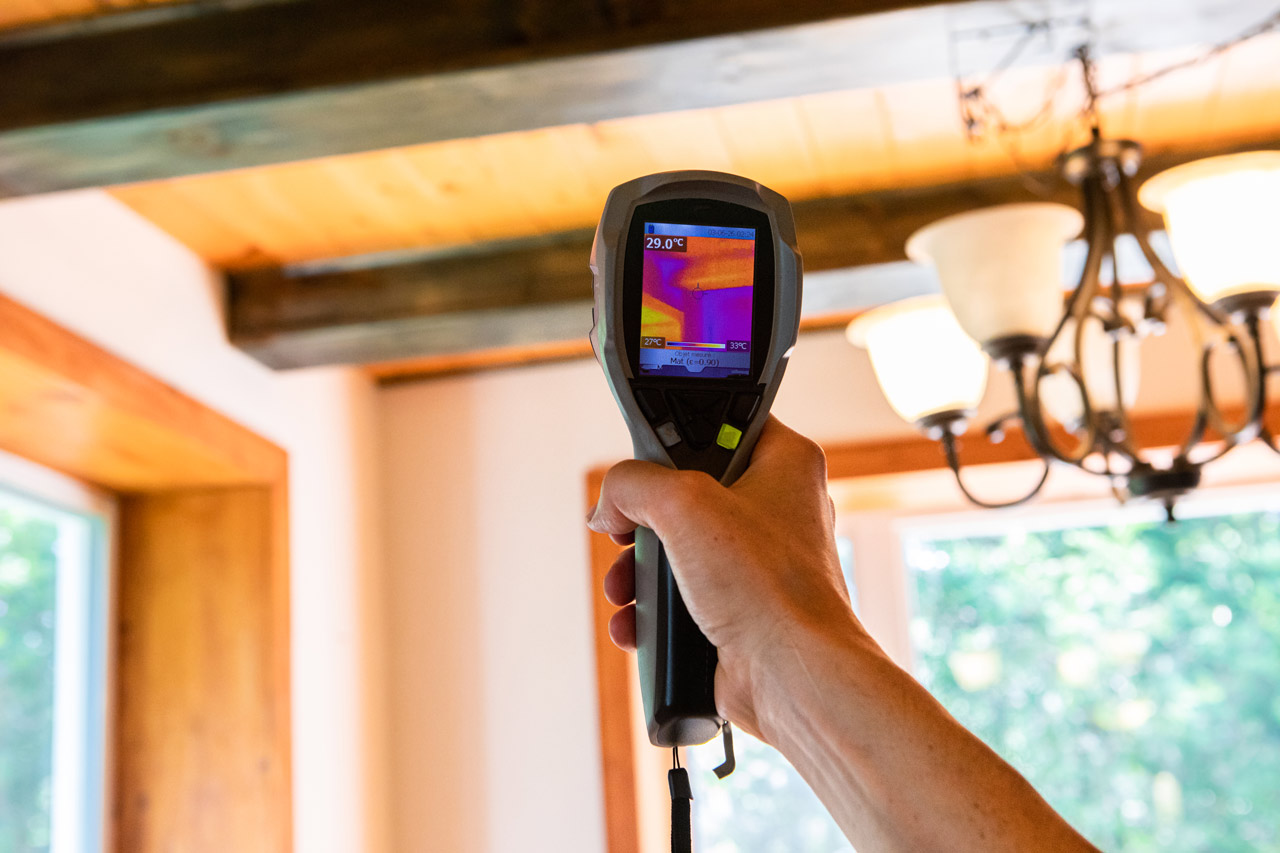How Much Do Thermal Imaging Inspections Cost?
Typical Range:
$150 - $650
Typical Range:
$150 - $650
Cost data is based on research by HomeAdvisor.
Published December 10, 2021
Written by HomeAdvisor.The average cost of an infrared thermal imaging inspection is $350. Prices vary from around $150 to $650, depending on various factors. These include whether it’s an add-on service to a traditional home inspection or a separate callout, the size and condition of your home, and the focus of the report. Thermography (as it’s also known) can alert you to issues not always found during a traditional home inspection.
| Average Cost | $350 |
| High Cost | $650 |
| Low Cost | $150 |
Various factors influence how much professionals might charge you for your thermal imaging inspection.
Many professionals already include thermal imaging as part of their standard home inspection costs, and those who don’t may offer it as an add-on service for as little as $150.
Sometimes, you may be looking specifically for a thermal inspection to check for or identify a particular issue. In these cases, the average fee is $350, but it could be more or less, depending on the additional factors below.
Some inspectors charge a flat rate, regardless of the size of your home. Others increase their rates depending on things like the number of rooms and stories, square footage, and HVAC usage. For example, an inspection of a one-bedroom, ground-floor apartment is often less than a four-bedroom, two-story home that requires a roof inspection.
A home in a poor state of repair or over a certain age may incur higher costs than a new property. The professional may need to conduct a more detailed inspection and write up a more in-depth report in these instances.
Hourly rates are standard for thermal imaging inspections—they typically take 30 minutes to 1.5 hours to complete. Homes over 4,000 square feet, for example, often cost more because they usually take at least 2 hours to inspect.
Inspection fees in populated cities are typically more than in rural locations. However, if a home inspector has to travel far to reach your home, they may add travel expenses to their final bill.
Some professionals have a standard thermal imaging inspection service and include particular elements within that. Suppose you only want an inspection to check for specific elements, such as moisture ingress, energy efficiency, electrical issues, or structural concerns. In that case, the fees may be less than for an overall inspection. However, not all professionals offer this type of breakdown.
Doing a thermal imaging inspection yourself isn’t a good idea. It’s not just about the initial expense of hiring or buying the expensive specialist equipment. You won’t have the training to interpret the data accurately and could end up missing a major structural concern or moisture ingress problem when you’re purchasing a home.
Check what qualifications your local home inspector holds. For example, the International Association of Certified Home Inspectors (InterNACHI) provides infrared certification. It’s also a good idea to ask for references and check whether they have insurance and the scope of the inspection and report. Even the quality of the infrared cameras your inspector uses influences the accuracy of the overall report.
Not all licensed home inspectors offer thermal imaging services since it requires specialist equipment and additional training.
Inspectors primarily use heat-seeking, non-invasive thermal imagery in homes to detect energy efficiency or moisture problems that might not be obvious to the naked eye. It highlights issues with heat loss through walls, ceilings, floors, doors, and windows. Plus, homeowners or potential buyers can uncover problems with leaky plumbing or roofs or structural water penetration since the cost of repairing a foundation with water damage can be substantial. Inspectors can even spot vermin infestations and overheating electrics with this technology.
When buying a home, it's best to use thermal imaging alongside a traditional visual inspection. There are things it won’t pick up because it relies on sensing heat signatures. If the outside and inside temperatures are similar, energy loss assessments won’t be accurate. This is also the case if a wet surface area has risen to the same temperature as the surface surrounding it. In these instances, the inspector may not detect moisture ingress problems.
